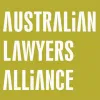Determining liability can be difficult enough when there are two cars involved, however when multiple vehicles are involved the situation can become even more complex. A vehicle may only hit another vehicle because they themselves were impacted from behind, which commonly occurs in multi-car pile-ups.
Ultimately, who is liable for a crash will be determined on a case-by-case basis, either by the insurance companies or by a court. However, there are some general principles that can help you determine your legal rights in multiple vehicle accident situations.
Who is at fault in a multi-car accident?
In a rear-end collision, where only two vehicles are involved, it is generally the car from behind that is considered to be at fault, no matter how abruptly the car in front stopped. Statistics show that 61% of car occupants deaths occur in collisions involving multiple vehicles.
In circumstances where there is a pile-up of three or more vehicles, a car will still be at fault for rear-ending another vehicle unless it was pushed by the car behind. Vehicles that are pushed into the vehicle in front by the car behind and who have no control over the collision will not be at fault. Generally, the first vehicle behind them that failed to stop and caused the chain of collisions will be at fault for the entire accident.
Here are a few example scenarios, each involving four vehicles;
Scenario A:
Car A drives through a red light and crashes into car B, C and D who were all driving through the intersection on a green light. Car A was at-fault and liable for all damages.
Scenario B:
Car A comes to a sudden stop due to changes in the traffic ahead. Car B slams into the back of Car A. Car C fails to stop and hits car B and car D then runs into car C. It's a four-car accident where each car from car B onwards failed to stop themselves in time. In this case, cars B, C and D are each responsible for the cars they rear-ended. Car B is liable for damages to car A. Car C is responsible for car B. Car D is responsible for car C. Only car A is not at-fault in this scenario.
Scenario C:
Vehicle A comes to a sudden stop due to changes in the traffic ahead. Vehicles B and C who are behind car A slam on their brakes and stop just in time. Vehicle D them plows into the back of vehicle C which shunts vehicle C forwards into vehicle B which in-turn hits vehicle A at the front. In this case, vehicle D would be liable for all damages in the accident. The other vehicles all stopped in time but were shunted forward due to the impact of vehicle D at the back.
Who’s liable?
Liability follows the party who is negligent or considered ‘at fault’ for the accident.
If you are deemed to be ‘at fault’ for an accident you will be liable to pay property damage to anyone whose vehicle or personal property you damaged and personal injury compensation to anyone injured by your actions.
Insurance may or may not be available to cover your liability to pay these amounts.
Who pays?
If you are at fault and liable to pay money to another party, an insurance policy may pay this liability for you.
All registered vehicles in Queensland have CTP insurance (compulsory third party) which covers the owner / driver of a vehicle for personal injury claims of other parties. Property damage insurance is optional. Third party or full comprehensive property insurance will cover damage to other people’s vehicles. As the policyholder, you may still have to pay an excess on the policy before they will pay out your full liability.
Once you notify your insurer of the accident, they will usually attend to determining and paying your liability for you, subject to payment of your excess. If you do not wish to claim on your insurance policy, you can choose to pay any damages out of your own pocket.
See also:
If you are worried about how to assert your rights after suffering a multi-car accident, contact Queensland's only real 'no win no fee lawyers.' Smith's Lawyers are experts in personal injury compensation claims, with offices based in Brisbane, Gold Coast, and Sunshine Coast.
Disclaimer: This information is designed for general information in relation to Queensland compensation law. It does not constitute legal advice. We strongly recommend you seek legal advice in regards to your specific situation. For further information on your claim, call 1800 960 482 to speak directly with out team.
Next steps — get advice now
It’s important to get advice for your specific situation. Check if you can make a risk-free compensation claim and get free initial advice from our Team on 1800 960 482.






